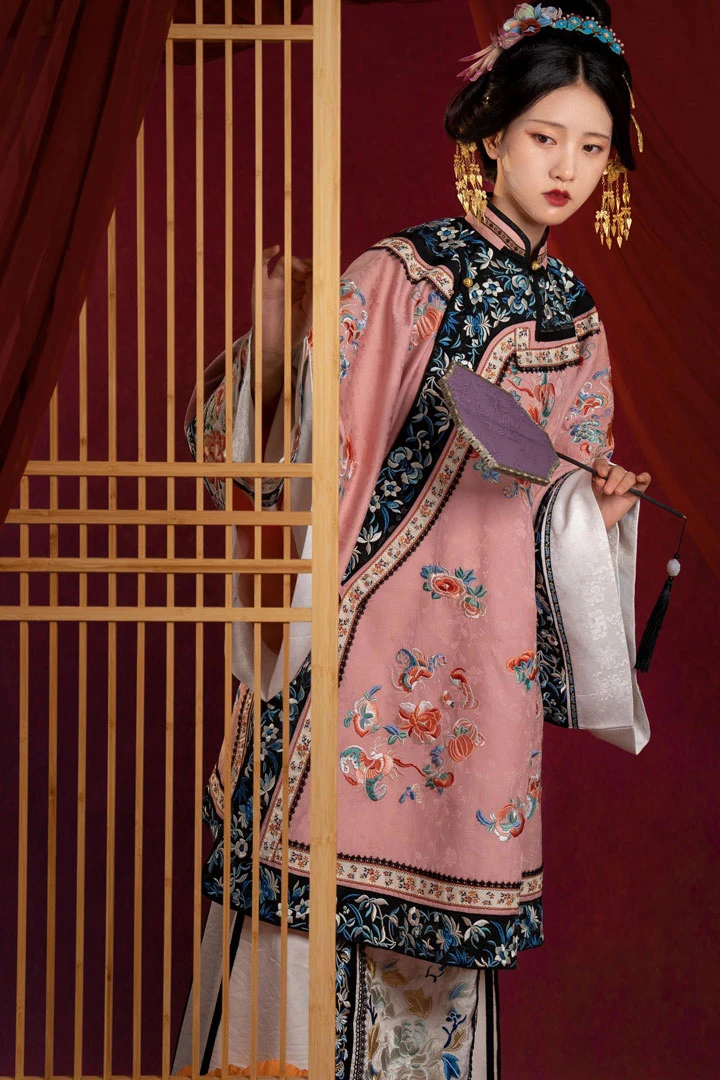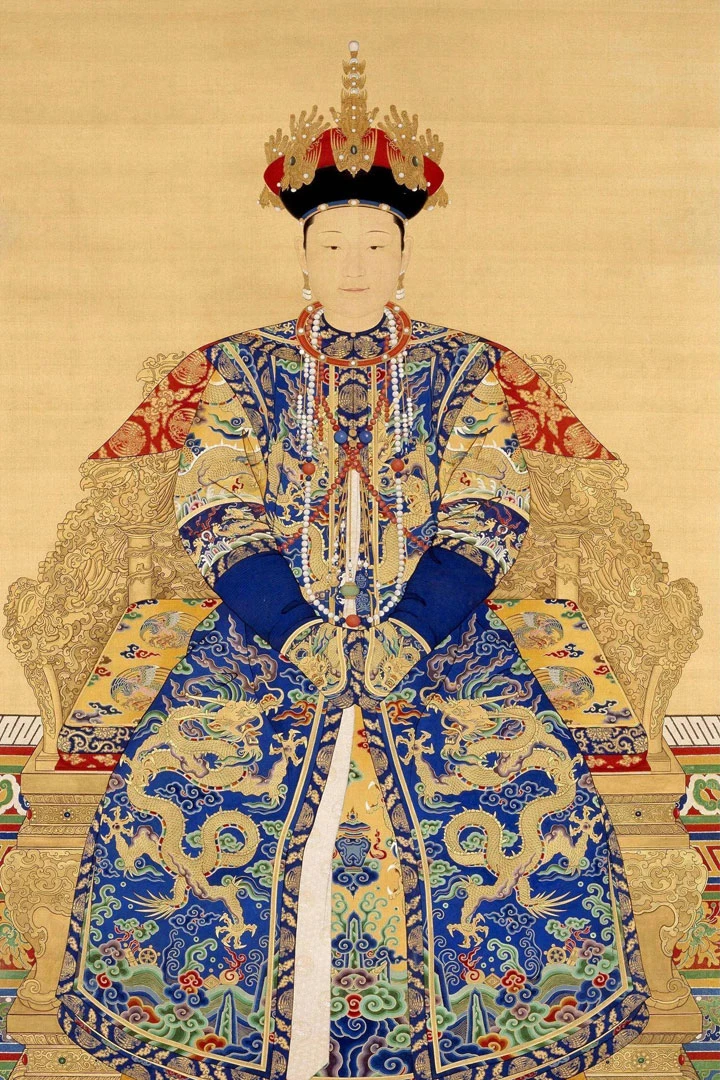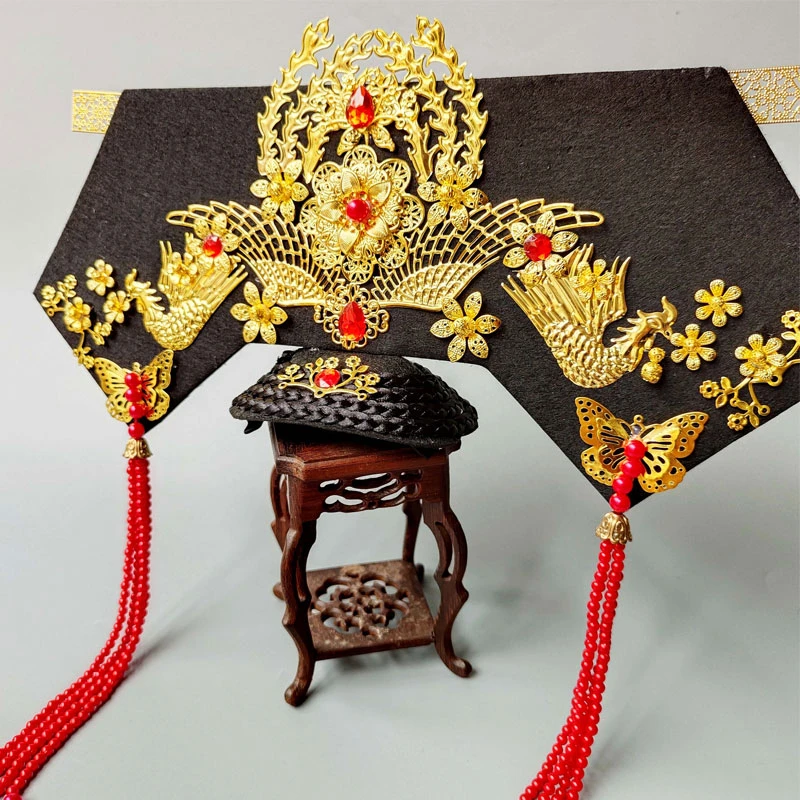In a grand collaboration between the Palace Museum and Poly Auction, supported by the Shenyang Palace Museum, the "National Colors and Palace Shades: Colors of Qing Dynasty Court Textiles" exhibition recently opened its doors to the public at the Poly Art Center.
This extraordinary display showcases nearly a hundred rare Qing Dynasty court textiles from the Palace Museum's collection, with additional spectacular pieces from the Shenyang Palace Museum. Over ninety percent of the exhibited items are being unveiled to the public for the first time, offering a comprehensive glimpse into the exquisite craftsmanship of traditional Chinese haute couture.
The exhibition's opening ceremony highlighted its significance with three distinct features. First and foremost, it focuses profoundly on color. Color, deeply symbolic in Chinese culture, not only reflects philosophical concepts of unity between heaven and humanity but also embodies traditional ritual systems and social order. The Qing Dynasty court adeptly integrated these colors, drawing from the essence of Chinese culture while incorporating the cultural characteristics of various ethnic groups such as Manchu, Han, Mongol, and Tibetan.
Secondly, the exhibition emphasizes the preciousness and rarity of its artifacts. Textiles from this era are notoriously fragile, prone to fading over time, making their preservation and display exceptionally challenging. Displaying nearly a hundred pieces of court textiles, most of which have never been shown to the public before, the exhibition showcases the era's advanced craftsmanship in weaving, dyeing, embroidery, and embellishment techniques.
Thirdly, beyond a mere display of artifacts, the exhibition serves as a platform for presenting the academic research achievements of the Palace Museum in the field of court textiles. This collaboration between the Palace Museum and the Shenyang Palace Museum, both repositories of Qing Dynasty imperial treasures and rich historical traditions, marks a significant cultural event aimed at celebrating and preserving China's rich cultural heritage.
The Shenyang Palace Museum's involvement underscores its unique role as one of China's two surviving Qing Dynasty royal palace complexes, renowned for its distinctive architectural styles reflecting Han, Manchu, Mongolian, Tibetan, and other ethnic influences. Recent exhibitions like "Splendor and Opulence: The Lavish Collections of the Shenyang Palace Museum" have garnered widespread acclaim, setting the stage for this vibrant collaboration to continue presenting captivating exhibitions that narrate China's compelling stories and uphold its exceptional cultural traditions.
The exhibition is divided into several thematic sections, each offering a nuanced exploration of Qing Dynasty court attire and its intricate symbolism. One section, titled "Heaven, Earth, Sun, Moon," meticulously recreates the ceremonial attire worn by Qing emperors during rituals at the Temple of Heaven, Temple of Earth, Temple of Sun, and Temple of Moon. These garments, distinguished by their specific colors—blue for winter solstice, bright yellow for summer solstice, red for spring equinox, and pale blue for autumn equinox—illustrate the meticulous attention to detail in imperial ceremonial dress under Emperors Yongzheng and Qianlong.
Another section, "Bright and Majestic," focuses on the prominent use of imperial yellow in Qing court attire, symbolizing supreme authority and auspiciousness. Displayed are textiles ranging from the finest yellow reserved for empresses and consorts to variations incorporating red or green hues, each meticulously embroidered with auspicious motifs like longevity symbols or floral designs.
A third section, "Elegant and Profound," highlights the deep azure hues favored in official court garments, exemplified by a classic piece—a cobalt blue robe intricately embroidered with dragons and clouds. This garment, known as a "golden dragon robe," exemplifies the meticulous craftsmanship of the Jiangnan weaving bureau during the Qianlong and Jiaqing reigns, showcasing the intricate patterns and rich colors that defined imperial attire.
Throughout the exhibition, visitors not only witness the seasonal variations in court attire but also trace the dynasty's rise, prosperity, and decline through its evolving color palette. These textiles, preserved through meticulous care and housed within the Palace Museum's extensive collection, offer a rare glimpse into the vibrancy and authenticity of traditional Chinese dyeing techniques and the cultural significance they embodied.
In essence, "National Colors and Palace Shades" is more than a mere display of historical artifacts; it is a celebration of China's artistic heritage, a testament to centuries of craftsmanship, and a bridge connecting past traditions with contemporary audiences. As the exhibition unfolds, it invites visitors to immerse themselves in the splendor of Qing Dynasty court culture, where every thread tells a story of imperial elegance and enduring legacy.
Illuminating the Legacy: Colors and Couture of the Qing Dynasty
As visitors traverse the exhibition halls, they are not merely observers of history but participants in a journey through time, exploring the refined tastes and cultural nuances that defined the Qing Dynasty court. Each textile on display, meticulously crafted and preserved, serves as a portal into a bygone era where clothing was not just attire but a language of status, ritual, and symbolism.
The exhibition's final segment, "Legacy and Continuity," underscores the enduring legacy of Qing Dynasty textiles and their influence on subsequent generations. From the intricate patterns of dragon robes to the delicate hues of ceremonial gowns, these textiles embody the essence of Chinese craftsmanship and artistic expression. They bear witness to the meticulous skills passed down through generations of artisans who dedicated their lives to perfecting the art of silk weaving, dyeing, and embroidery.
Moreover, the exhibition sparks a broader conversation about cultural preservation and heritage conservation in contemporary China. It prompts reflection on the significance of these textiles beyond their aesthetic appeal, highlighting their role in shaping national identity and pride. By showcasing these artifacts to a global audience, the Palace Museum and Shenyang Palace Museum aim to foster a deeper appreciation for China's rich cultural tapestry and inspire future generations to safeguard and celebrate their heritage.
In conclusion, "National Colors and Palace Shades: Colors of Qing Dynasty Court Textiles" stands as a testament to the timeless allure of Chinese imperial fashion and the enduring legacy of its cultural traditions. It invites us to marvel at the ingenuity of ancient artisans and contemplate the intricate narratives woven into each thread and dye. Through this exhibition, we not only glimpse the opulence of a bygone era but also gain insights into the profound symbolism and artistic mastery that defined Qing Dynasty court attire.
As the curtains close on this extraordinary exhibition, it leaves behind a lingering appreciation for the beauty and complexity of Qing Dynasty textiles—a legacy that continues to captivate and inspire generations worldwide. It is a celebration of China's vibrant cultural heritage, a tribute to the artisans who shaped its history, and a reminder of the timeless elegance embodied in every stitch and motif.
In the years to come, may exhibitions like "National Colors and Palace Shades" continue to illuminate our understanding of China's cultural legacy, ensuring that these treasures endure as testaments to the ingenuity and artistic brilliance of past civilizations.




